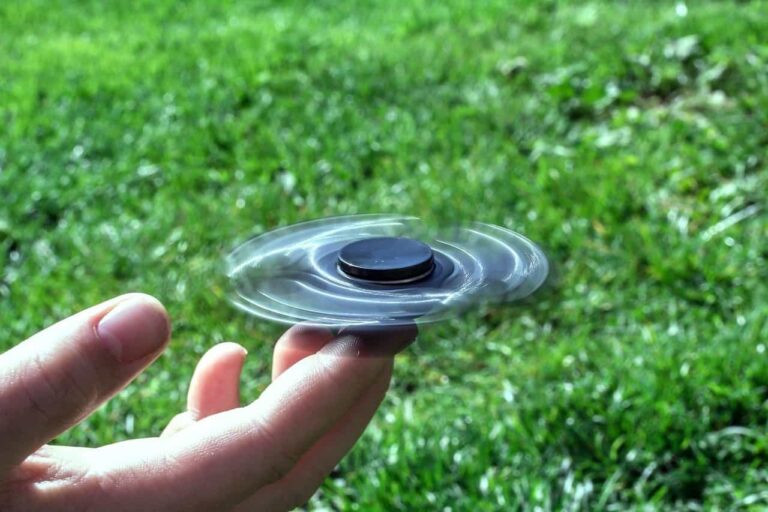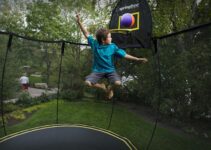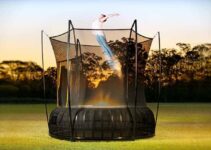How These Toy-Like Gadgets Can Be Used To Improve Your Emotional Wellbeing
Hi there, my name is Daniel and I’m a clinical psychologist. In my work as a therapist in a private hospital, I have an appreciation for just how badly people need a sense of peace and calm in their day-to-day routine.
Is it possible that a small, colorful, whirring little tool can foster this sort of psychological wellbeing? Collectively called fidget toys, fidget spinners and fidget cubes are fun, collectable and playful little objects.
We’ll describe the differences between them in more detail below. For now, however, it’s important to note that these devices are more than just toys. Rather, they are tools created as an aid for anxiety, hyperactivity and Autism Spectrum Disorder (ASD).
This article explores the mental health benefits associated with fidget toys. We explore the contentious question as to how these novel tools can aid you, your child and/or your loved ones who may suffer because of a mental health condition.
We also provide a guide to selecting the right fidget toy for your needs from the selection on the market now. Read on to learn more.
Table of Contents
- What are Fidget Spinners/Cubes?
- How These Toys Can Be of Benefit to You and/or Your Child
- Who Stands to Benefit?
- Do They Really Work?
- Our Picks for the Best Fidget and Spinners for Children and Adults
- 1. Helect’s H1037 (Great for school)
- 2. theFube Infinity (Best quality cube for children)
- 3. Infinity Cube (Great value – for kids)
- 4. Dodecagon’s WCZC (All the bells and whistles)
- 5. Lingxin’ s Spinner and Cube (Best quality for adults)
- 6. Lifidea’s Cube (A subtle option)
- 7. Wewinn Pure Brass Cube (Best metal)
- Takeaway: Fidget Your Way to A Happier, Healthier You.
What are Fidget Spinners/Cubes?
Fidget spinners are two or more discs connected to a ball bearing. The discs spin around the ball bearing when they are flipped or tapped. The spinning may make a soft whirring sound. These fidget spinners are small enough to hold in one hand; and they are usually held between thumb and forefinger [7]. They come in various sizes, shapes and colours.
Fidget cubes are also small enough to hold in one hand. However, these are a little bit more, well, fidgety! Each surface of the cube contains a different switch, dial, button or raised surface [2] that can be clicked, rubbed, flicked, rotated or dialed. Some of the gadgets may make a noise like the click of a light switch, and some are simply silent.
How These Toys Can Be of Benefit to You and/or Your Child
First, we need to understand that some fidgeting can be involuntary [5]. To demonstrate this, the National Institute of Mental Health’s (NIMH) brain (MRI) scans show that people with Attention-Deficit/Hyperactivity Disorder (ADHD) have smaller areas in the parts of the brain that manage their ability to control the impulse to fidget that people without ADHD.
What does this mean? Essentially, an ADHD adolescent student may not be able to remain still during class while waiting to be active at recess [5]. The rest of the class, on the other hand, may have no problem waiting. The child with ADHD will be at a serious disadvantage.
So, basically this helps us to understand that some people cannot help fidgeting. Research also tells us that we fidget when we are either (a) under-stimulated or (b) anxious. For these reasons, fidgeting serves two very important purposes for the fidgeter:
- When we are under-stimulated (or bored), the correct amount of fidgeting relieves the bored tension and allows the brain to focus on the lesson at hand [3].
- When we are anxious (or fearful), our ability to think clearly and to learn is impaired. This is where intentional fidgeting can assist. It is soothing to the sufferer because it releases nervous energy and lowers our cortisol levels when we are stressed [6]. This, in turn, allows us to function better.
This does not mean that all fidgeting is helpful to learning, however! We are only referring here to intentional and therapeutic fidgeting [16]. These processes are thought to promote concentration, are calming and help us to adjust to our environments more effectively [1].
Who Stands to Benefit?
If you are considering fidget spinners/cubes for yourself or your family as a strategy [12] to enhance learning and work efficacy [15], you may find this list of specific uses for fidget toys helpful:
Fidget spinners/cubes may benefit:
- People with Autism Spectrum Disorders
- People with ADHD
- People who are anxious (or have an anxiety disorder)
- People who tend to get restless or fidgety
- People with emotional regulation difficulties, [16].
Do They Really Work?
We looked at what people are saying about fidget cubes/spinners. Let’s review the facts:
For children
The fidget cube may be better than the fidget spinner when in class:
ADDitude Magazine recommends the fidget cube rather than the fidget spinner in school-settings. Why? Because the cube is purely tactile and can be used without one actually looking at it. For example, it can remain in the schoolchild’s pocket, meaning that it won’t attract and distract other children.
On the other hand, the fidget spinner requires hand and eye coordination. It is therefore more likely to become more of a distraction to others in the classroom, [15]. It’s also important to think about sound in a public setting. Constant clicking may be inappropriate in a classroom, even if it helps the student to study when they are at home.
Remember that when any fidget toy become the focus of the lesson, then it is not being used for its purpose. Rather, fidget toys should simply be operated subtly and in the background, helping the child to focus on their work.
Fidget cube choking hazard warning for small children:
A recent Pediatric periodical warned that the fidget cube battery could be a choking hazard for small children, [14]. It’s important to keep this in mind and approach with caution; just as you would any other toy that’s small and hard.
Lack of evidence that positively supports the benefit of fidget cubes/spinners:
Another recent study failed to find a positive effect on ADHD schoolchildren who were provided with a fidget toys [9]. This last study however, was conducted across a very small number of participants and has yet to be validated by similar studies.
Fidget toys are worth a try:
Therapists often recommend fidget toys, but it is well known that attention problems in developing children generally mean that a child will make poor progress at school [13]. Parents may, therefore, simply choose to buy fidget toys to assist their children to cope better academically and socially.
For adults
In some, ADHD symptoms only become prominent and problematic in adulthood [10], and although a moderate amount of anxiety can improve our performance at work or sport in the form of eustress (i.e. a balance of stress) [4] adult fidgeters may need to find a way to fidget that does not affect other people in the workplace and at home and become counter-productive [12].
The World Health Organization, (WHO) found that ADHD is common in the workplace and that this has a detrimental effect on our workforce and production [8]. ADHD in adults is sadly under-treated and for this reason, fidget toys are valuable to adults if they can enhance and improve our work life [13].
The bottom line:
So, when it comes to figet toys, what’s the bottom line? Do they work, or are they just another gimmick? What does the science say? Well, unfortunately at this point there simply isn’t enough science out there to give us a definitive answer.
Can fidget toys improve focus and wellbeing in clinical populations? Perhaps. More research is required before we can know for sure.
Until then, however, there is some preliminary and anecdotal evidence suggesting that fidget toys are far more than just a fad. It’s important to be skeptical and approach all mental health treatment options with a pinch of salt.
However, if you give them a try, you may find that fidget toys make a dramatic difference to you or your loved one’s life.
Our Picks for the Best Fidget and Spinners for Children and Adults
To get optimum benefit from your purchase, you need to be able to make the right choice of fidget toy for your needs. Take a look at the following guideline that we’ve put together to assist you:
Fidget Cubes and Spinners for Children:
1. Helect’s H1037 (Great for school)
Helect’s H1037 Fidget Cube Toy made to relieve stress and anxiety is Amazon’s top choice in fidget cubes right now. Not flashy and of a great quality, it is made of highly durable ABS plastic and silicon. It comes with a lifetime guarantee so that your child can flip, glide, spin, click and breathe as much as needed without attracting too much attention.
Click here to see today's price for the Helect H1037 Fidget Cube on Amazon
2. theFube Infinity (Best quality cube for children)
Made by PILPOC theFube Infinity Cube Fidget Cube Desk Toy is premium quality aluminum with an exclusive case. It is sturdy and heavy, relieves stress and anxiety, and is used for ADD, ADHD and OCD. You can find it on Amazon and Wantitall.
It is more expensive that the others. However, this is warranted, give that it is made of premium aluminum alloy. This cube comes in beautiful colors and is made up of eight small cubes that can be rotated at any angle – this provides endless fidget possibilities.
Click here to see today's price for the theFube Infinity Cube on Amazon3. Infinity Cube (Great value – for kids)
The Infinity Cube Fidget Toy by Trekbest provides pressure reduction, anxiety relief and is a killing time toy for ADD, ADHD, anxiety, and ASD. It is reasonably priced and made of quality materials.
This infinity cube is colorful and ergonomically comfortable to hold, an attractive cube that can be folded in any direction and will make a great gift!
Click here to see today's price for the Trekbest Infinity on Amazon
4. Dodecagon’s WCZC (All the bells and whistles)
Dodecagon’s WCZC 12 Sided Fidget Cube for anti-anxiety, stress relief and symptoms of ASD is for children, teens and adults. It boasts gears, buttons, a joystick, a switch, stress balls, sliding blocks, minions, a rotating disk, and silicone strap. This one is for advanced fidgeters.
Click here to see today's price for the WCZC 12 Sided Cube on Amazon5. Lingxin’
s Spinner and Cube (Best quality for adults)
Lingxin’s Anti-anxiety Fidget Spinner / Anti-anxiety Infinity Cube Toy is a new fidget toy made of stainless steel. Great for concentration, the double pendulum and random motion mimics the Chaos Theory: i.e. that each action follows a unique path.
Click here to see today's price for the Lingxin’s Anti-anxiety Fidget Spinner on Amazon
6. Lifidea’s Cube (A subtle option)
Lifidea’s Aluminum Alloy Metal Infinity Cube handheld fidget cube and desk toy comes with a case. This infinity magic cube is said to relieve stress, anxiety, ADHD and even OCD in adults.
You can choose from six different colors: rose gold, blue, peach, silver, red and black and this smart toy will be at home on your desk where it may even look like an object d’art. Durable and portable (it can fit in your wallet) this infinity cube is made of eight small cubes and has an ultra-smooth rotating action.
Click here to see today's price for the Lifidea’s Aluminum Alloy Metal Cube on Amazon
7. Wewinn Pure Brass Cube (Best metal)
Wewinn Pure Brass Fidget Cube with gears and linkage is for ADHD, focus, meditation and breaking bad habits. Made of pure brass, each side is mechanical, using cogs and wheels. This classy-looking toy will attract attention and be the topic of conversations. However, this is one of the most expensive options, usually priced at over $20.
Click here to see today's price for the Wewinn Pure Brass Fidget Cube on Amazon
Takeaway: Fidget Your Way to A Happier, Healthier You.
Until there are more formal studies that confirm their long-term benefits, fidget toys remain a personal choice. However, despite a few negative reports, many anecdotal reports say that they are beneficial, both at school and at work, [14].
Since their rise to popularity in 2017, the selection of fidget toys available both in store and online has blossomed. These tools are becoming more and more beguiling and inventive, even making a name as valuable tools in Early Childhood Development (ECD); as well as anxiety-related disorders and focus aids for high-functioning professionals.
So, why not take the plunge and give it a try. You may find that fidget toys provide you with exactly the sort of outlet needed to turn you into a happier, calmer and more productive version of yourself.
References
- American Psychiatric Association. (2013). Diagnostic and statistical manual of mental disorders (5th ed.). Arlington, VA: Author.
- Antsy Labs (Producer). (2016). Fidget Cube..
- Ashworth. H., Why do we fidget? BBC Focus Magazine. Retrieved from https://www.sciencefocus.com/the-human-body/why-do-we-fidget/ on 25 December 2018.
- Barlow, D., & Durand, V. (2014). Abnormal psychology: An integrative approach (7th ed., ch. 1). CA, USA: Wadsworth Cengage Learning.
- Bower, B. (1994). Brain Images Delve into Hyperactivity. Science News, 145(20), 309-309. Retrieved from https://www.jstor.org/stable/3978119 on 26 December 2018.
- Carriere, J.S. A., Seli, P., Smilek, D. (2013). Wandering in both mind and body: Individual differences in mind wandering and inattention predict fidgeting. Canadian Journal of Experimental Psychology/Revue canadienne de psychologie expérimentale, 67(1), 19-31. https://dx.doi.org/10.1037/a0031438
- Cohen, E. J., Bravi, R., & Minciacchi, D. (2018). The effect of fidget spinners on fine motor control. Scientific reports, 8(1), 3144. doi:10.1038/s41598-018-21529-0
- De Graaf, R., Kessler, R., Fayyad, J., Have, M., Alonso, J., Angermeyer, G Borges, Demyttenaere, K., Gasquet, I., de Girolamo, G., Haro, J., Jin, R., Karam, E., Ormel. J., & Posada-Villa, J. (2008). The prevalence and effects of adult attention-deficit/hyperactivity disorder (ADHD) on the performance of workers: Results from the WHO World Mental Health Survey Initiative. Occupational and Environmental Medicine, 65(12), 835-842. Retrieved from https://www.jstor.org/stable/25835312.
- Graziano, P. A., Garcia, A. M., & Landis, T. D. (2018). To Fidget or Not to Fidget, That Is the Question: A Systematic Classroom Evaluation of Fidget Spinners Among Young Children With ADHD. Journal of Attention Disorders. https://doi.org/10.1177/1087054718770009
- Moffitt, T., Houts, R., Asherson, P., Belsky, D. W., Corcoran, D. L., Hammerle, M.,
- Harrington, H., Hogan, S., Meier, M., Polanczyk, G., Poulton, R., Ramrakha, S., Sugden, K., Williams, B., Rohde, L., Caspi, A. (2015). Is adult ADHD a childhood-onset neurodevelopmental disorder? Evidence from a four-decade longitudinal cohort study. American Journal of Psychiatry. (172)10. doi.org/10.1176/appi.ajp.2015.14101266
- Murphy, S. (2014). Grades 1 Through 3: Finding the Right Fit: Inclusive Strategies for Students With Characteristics of ADHD. YC Young Children, 69(3), 66-71. Retrieved from https://www.jstor.org/stable/ycyoungchildren.69.3.66
- Rommelse, N., Antshel, K., Smeets, S., Greven, C., Hoogeveen, L., Faraone, S., & Hartman, C. (2017). High intelligence and the risk of ADHD and other psychopathology. British Journal of Psychiatry, 211(6), 359-364. doi:10.1192/bjp.bp.116.184382.
- Schecter, R. A., Shah, J., Fruitman, K., Milanaik, R. L. (2017).Fidget spinners: Purported benefits, adverse effects and accepted alternatives. Current Opinion in Pediatrics. 29(5):616-618. Doi: 10.1097/MOP.0000000000000523.
- Silver, E., (2017) Fidget toys: Effective tools or classroom distractions? “The Atlanta Journal-Consitution.” Retrieved from https://www.ajc.com/lifestyles/fidget-toys-effective-tools-classroom-distractions/i4FB0QtMsMA6e9L0YY8zrN/ on 26 December 2018.
- The secret power of fidgets: how multitasking promotes focus – if done right. “ADDitude,” 2016. Retrieved from https://www.additudemag.com/download/focus-fidgets-for-adhd-students on 26 December 2018.



